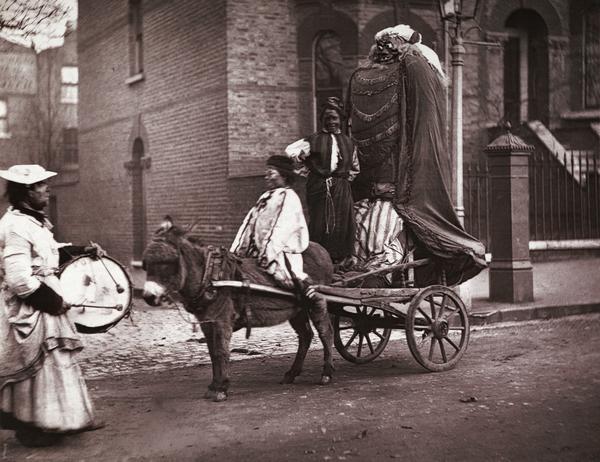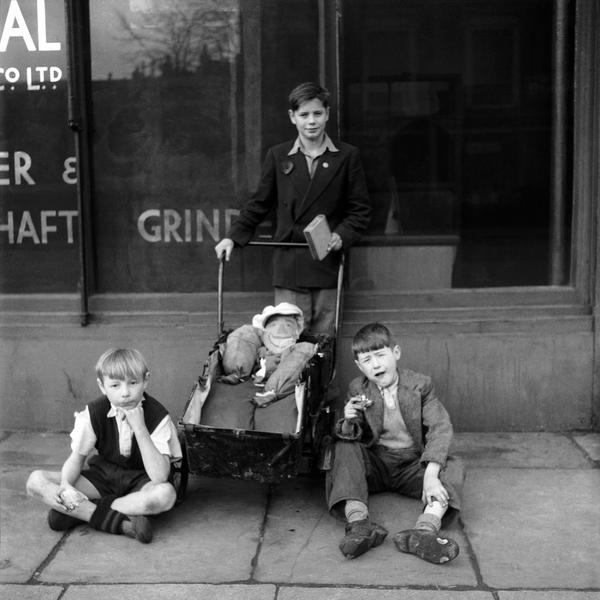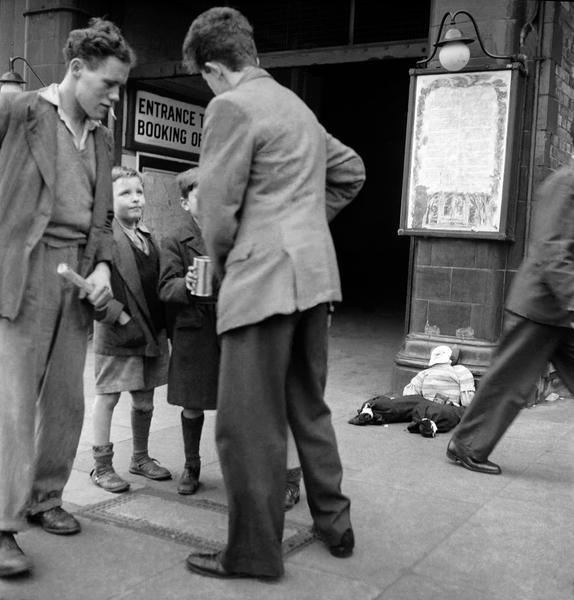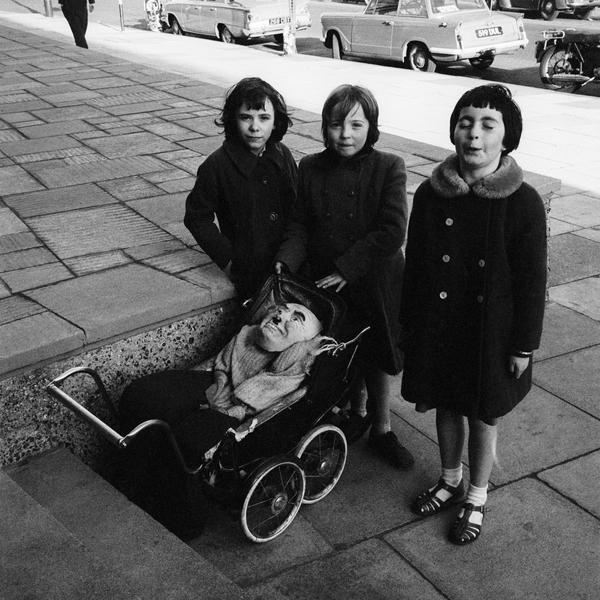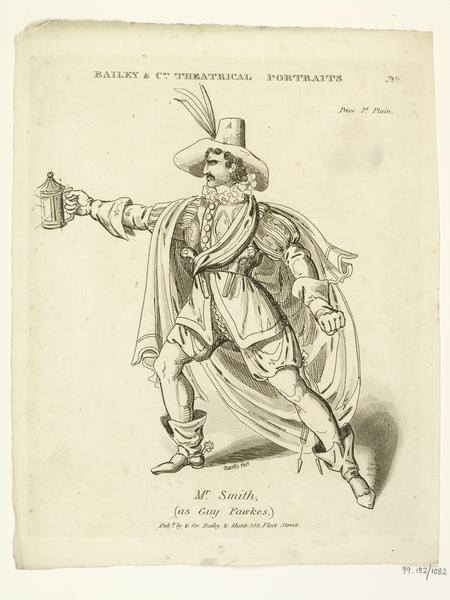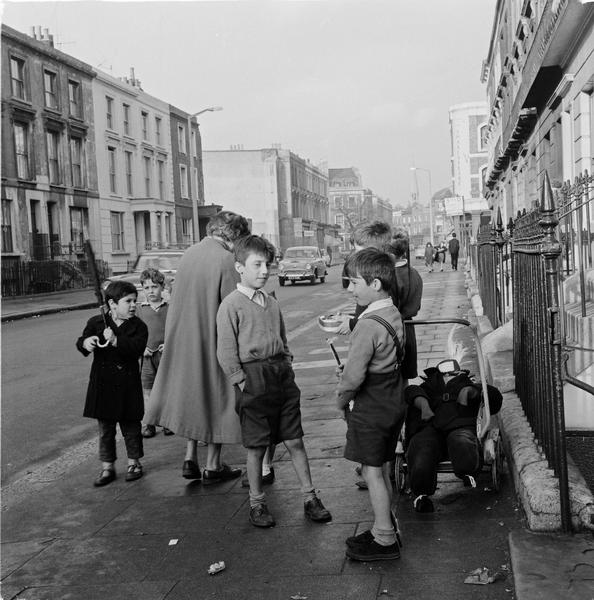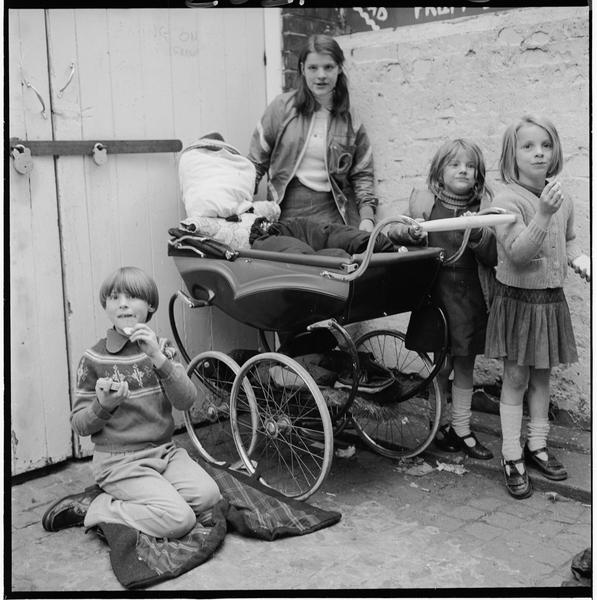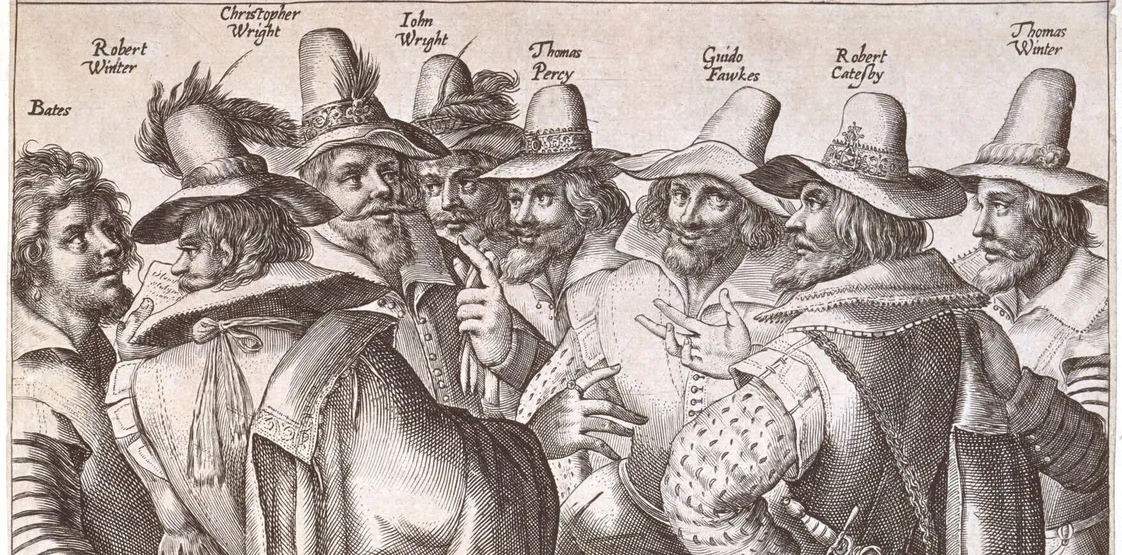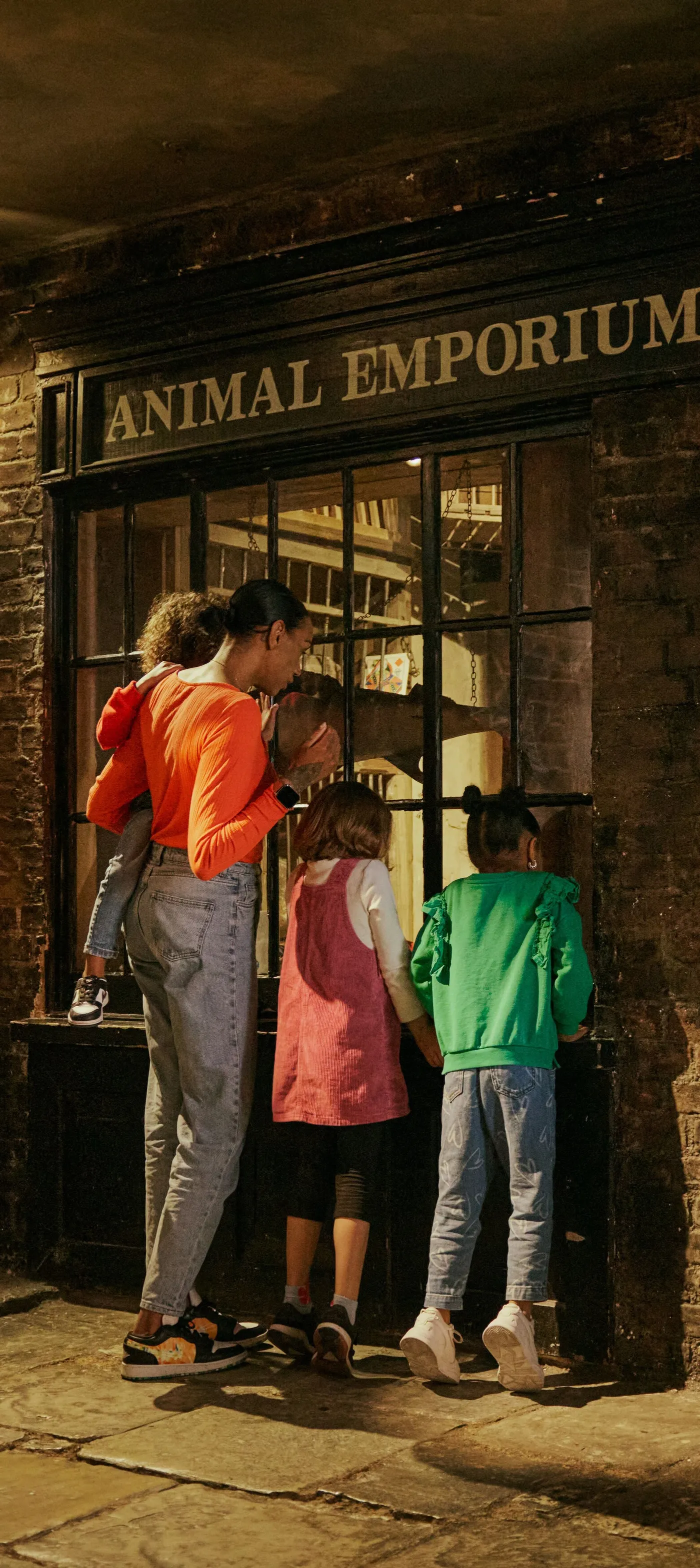Penny for the Guy?: A lost Bonfire Night tradition
Forget firework displays. In the 20th century, ahead of 5 November, children raised money by wheeling homemade Guy Fawkes effigies around town, shouting “penny for the Guy?” The Guy was then burned on a bonfire. Photographer Henry Grant captured this now-lost tradition from the 1950s to 1970s.
Across London
1950s–1970s
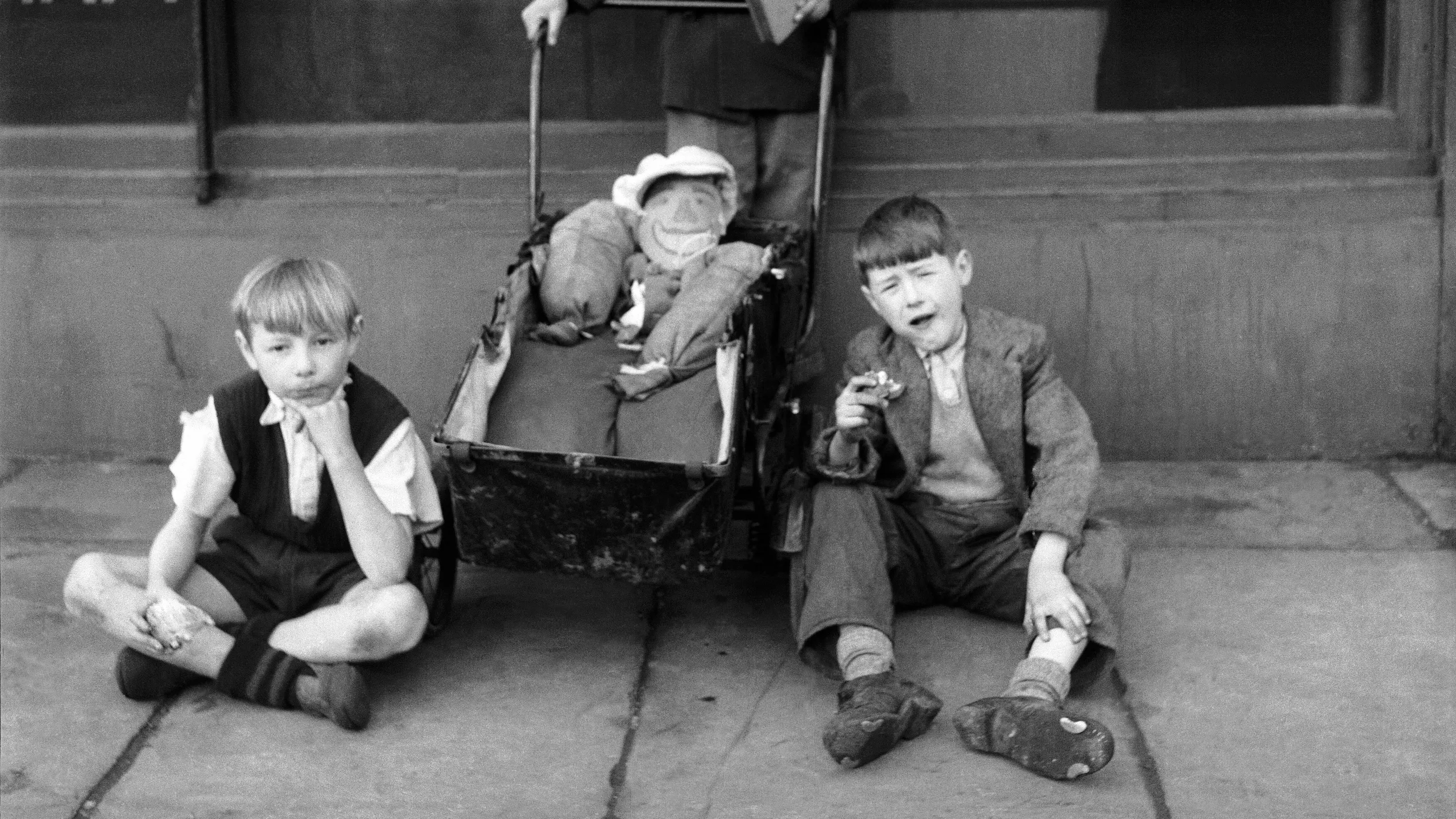
What was the Gunpowder Plot of 1605?
In 1605, Guy Fawkes and a group of other Catholics tried to blow up the Houses of Parliament. They wanted to kill the Protestant King James I and put a Catholic monarch back on the throne. Ahead of Parliament’s opening on 5 November, they hid nearly a ton of gunpowder under the building. Fawkes prepared to trigger the explosion. But he was caught. Many of the plotters, including Fawkes, were captured, tried and executed for treason.
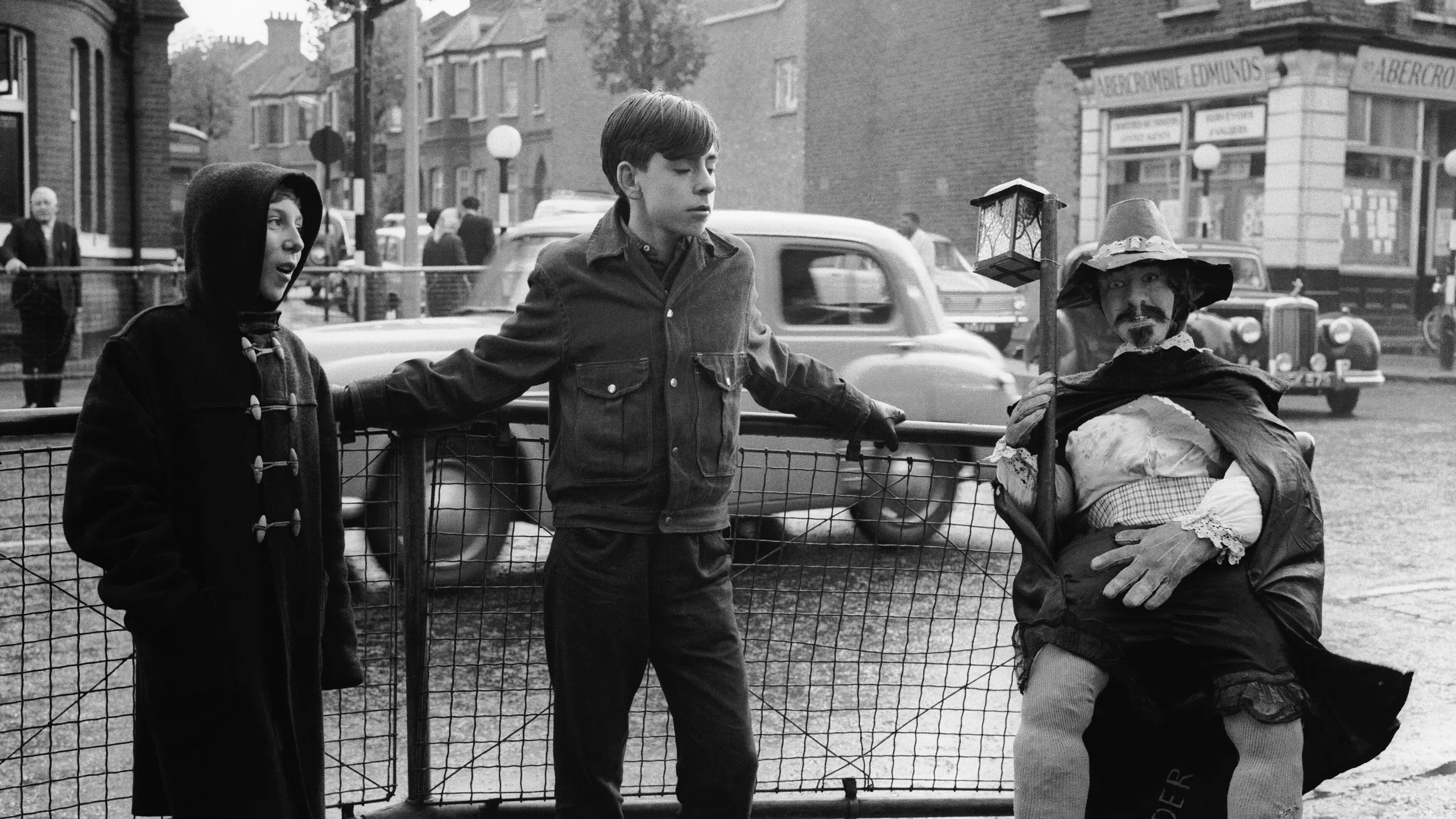
Fawkes the folk devil
Bonfires were held annually in England to celebrate the failure of the plot and the king’s survival. The tradition evolved over the following centuries. Fireworks joined the party from at least the 1650s. And by the 1790s, it was Fawkes – the man who would have lit the fuse – who became the face of the failed assassination. That’s why Bonfire Night’s also called Guy Fawkes Night. Spot his stylised facial hair shown on this effigy.
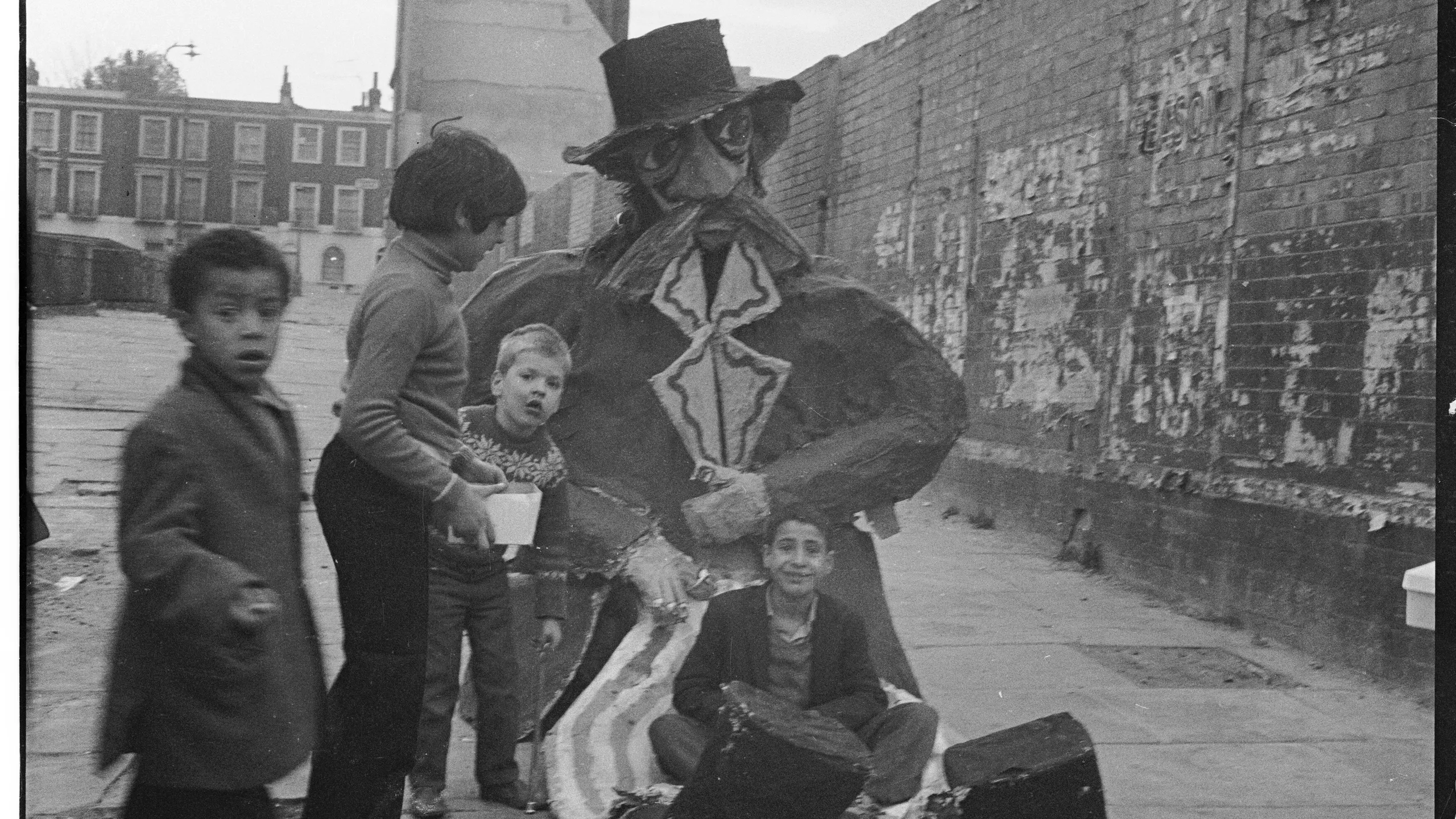
Burning effigies of Fawkes
Models of Fawkes have been burned on bonfires since at least 1790. Before then, effigies of the Pope were burned, reflecting the anti-Catholic beliefs of the time. Although large, organised bonfires are common today, most bonfires used to be more informal, arranged in streets or back gardens. Here, Grant photographed children with their big homemade effigy in Camden Town, ready to meet the flames on top of the bonfire.
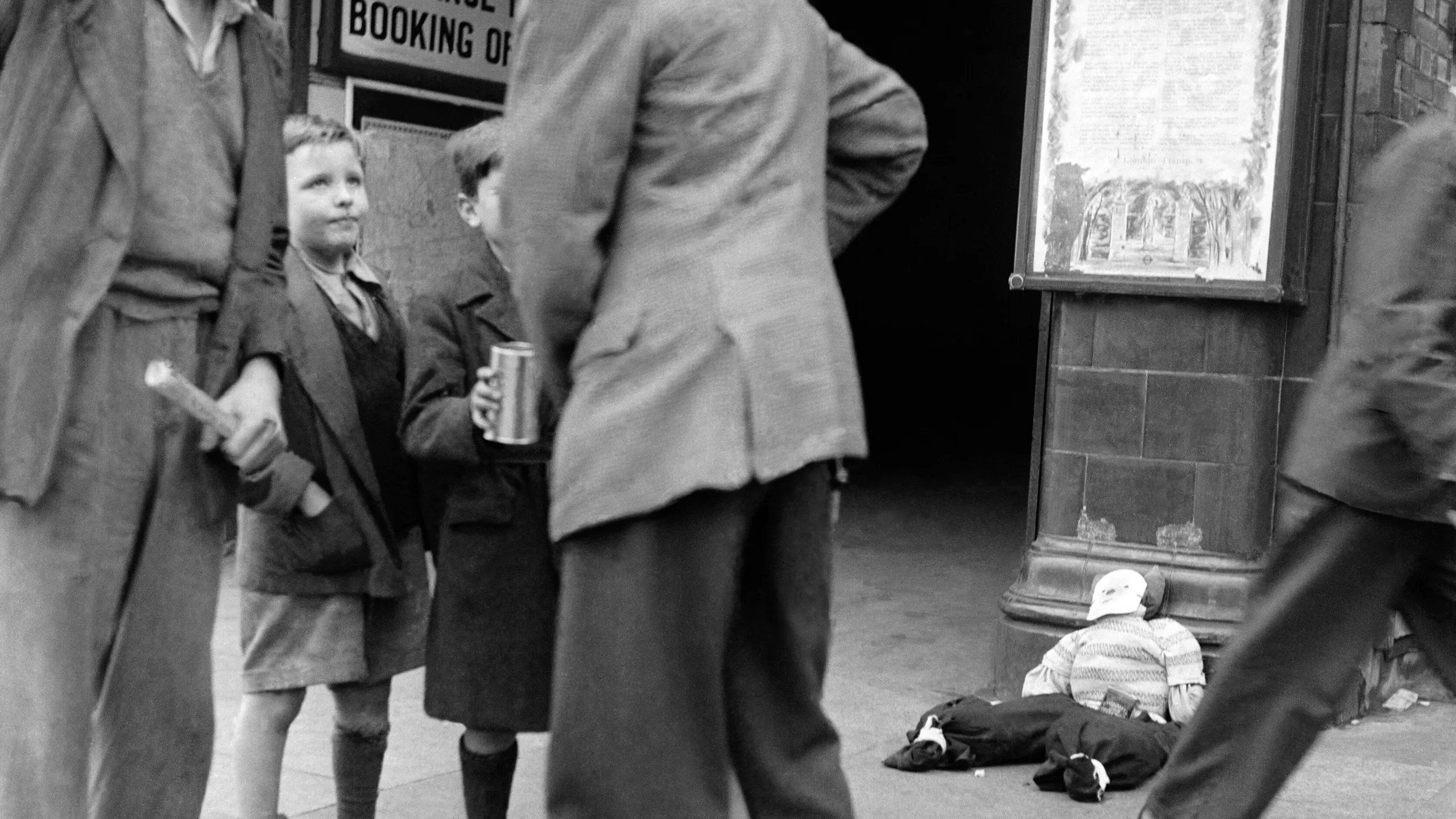
Penny for the Guy?
In the lead up to 5 November, children would stuff old clothes or pillows and make a model of Guy Fawkes. They’d take him around the neighbourhood, often in a pram or wheelbarrow, and ask people for money, calling out, “penny for the Guy?” Here, Grant’s captured two young children in the act, with one holding out a tin for collecting coins.

A well-chosen spot
These boys have picked a busy spot for fundraising, planting their Guy right outside Chancery Lane underground station in High Holborn.
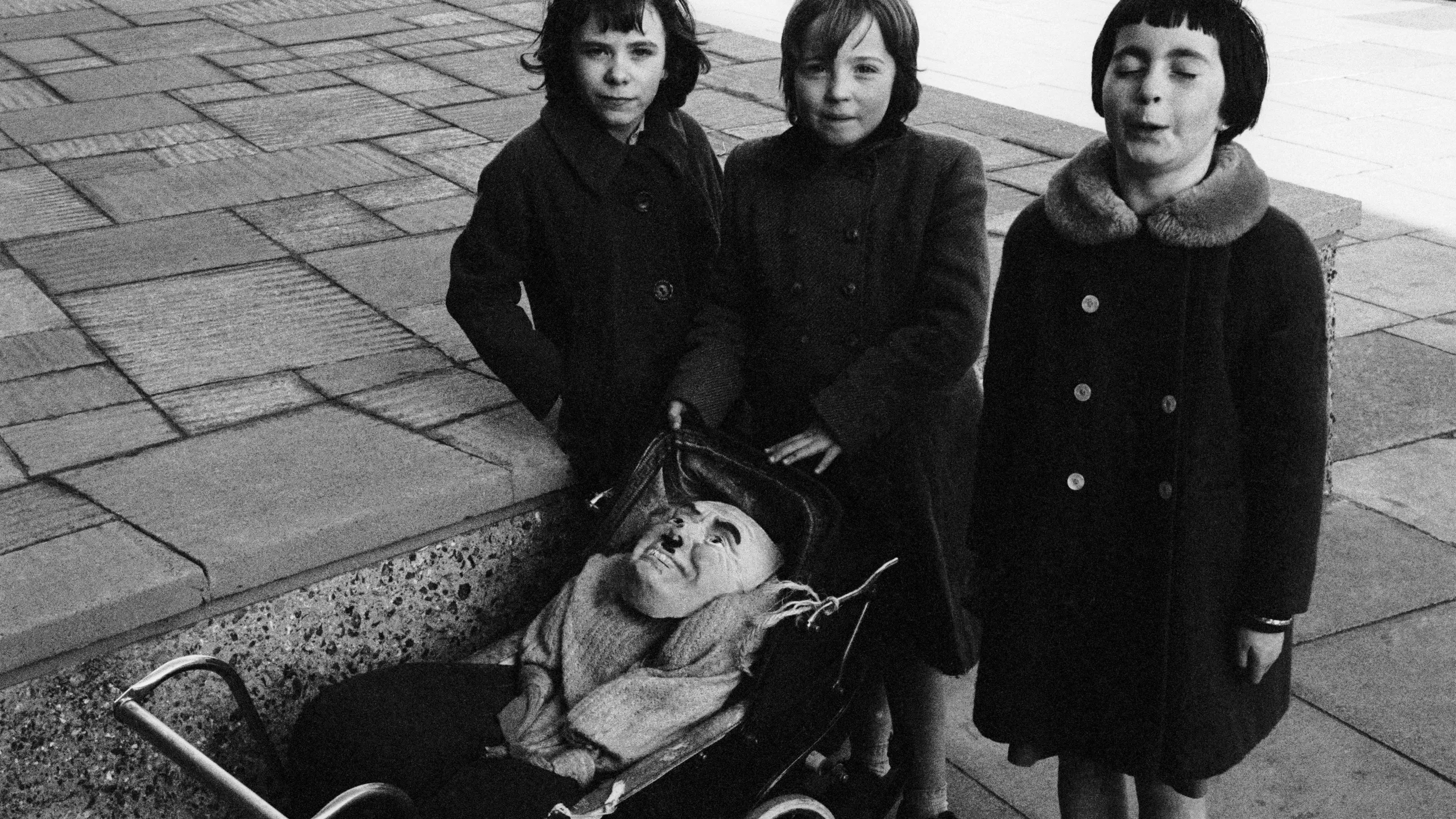
What did children do with the money?
The money raised was, in theory, for children to go and buy fireworks to let off on Bonfire Night. Sometimes, they’d donate the cash to a good cause. But more often than not, it was just kept as pocket money.
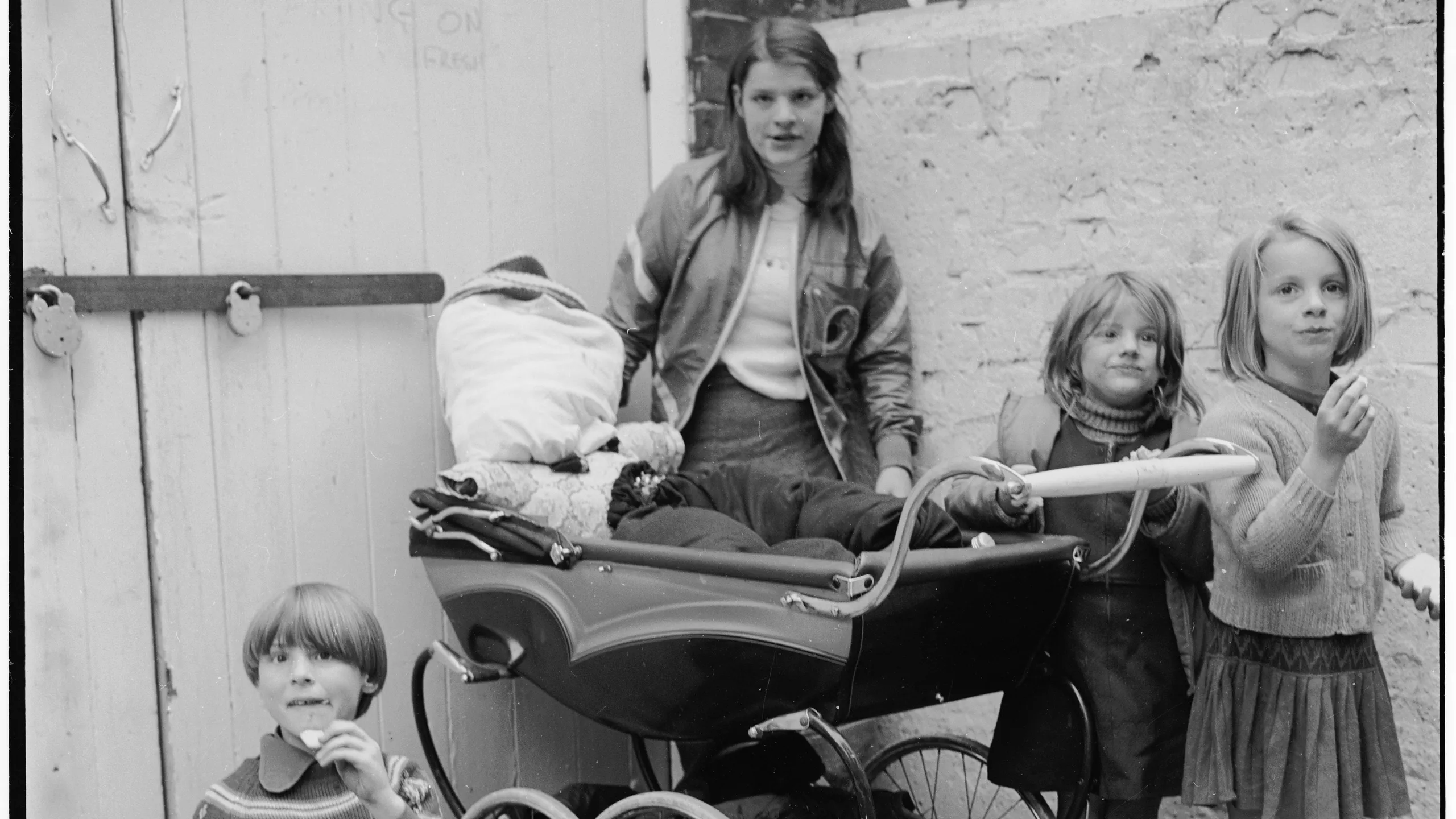
It wasn’t popular with everyone
In 1957, a BBC report explored the split opinions over giving ‘penny for the Guy’. One interviewee was quite unhappy with how the children’s fundraising was creeping earlier into the year. “If the parents love their children that much,” she said, “they should… give them sufficient pocket money to go out and enjoy that one night, not to start Guy Fawksing about at the end of August.”
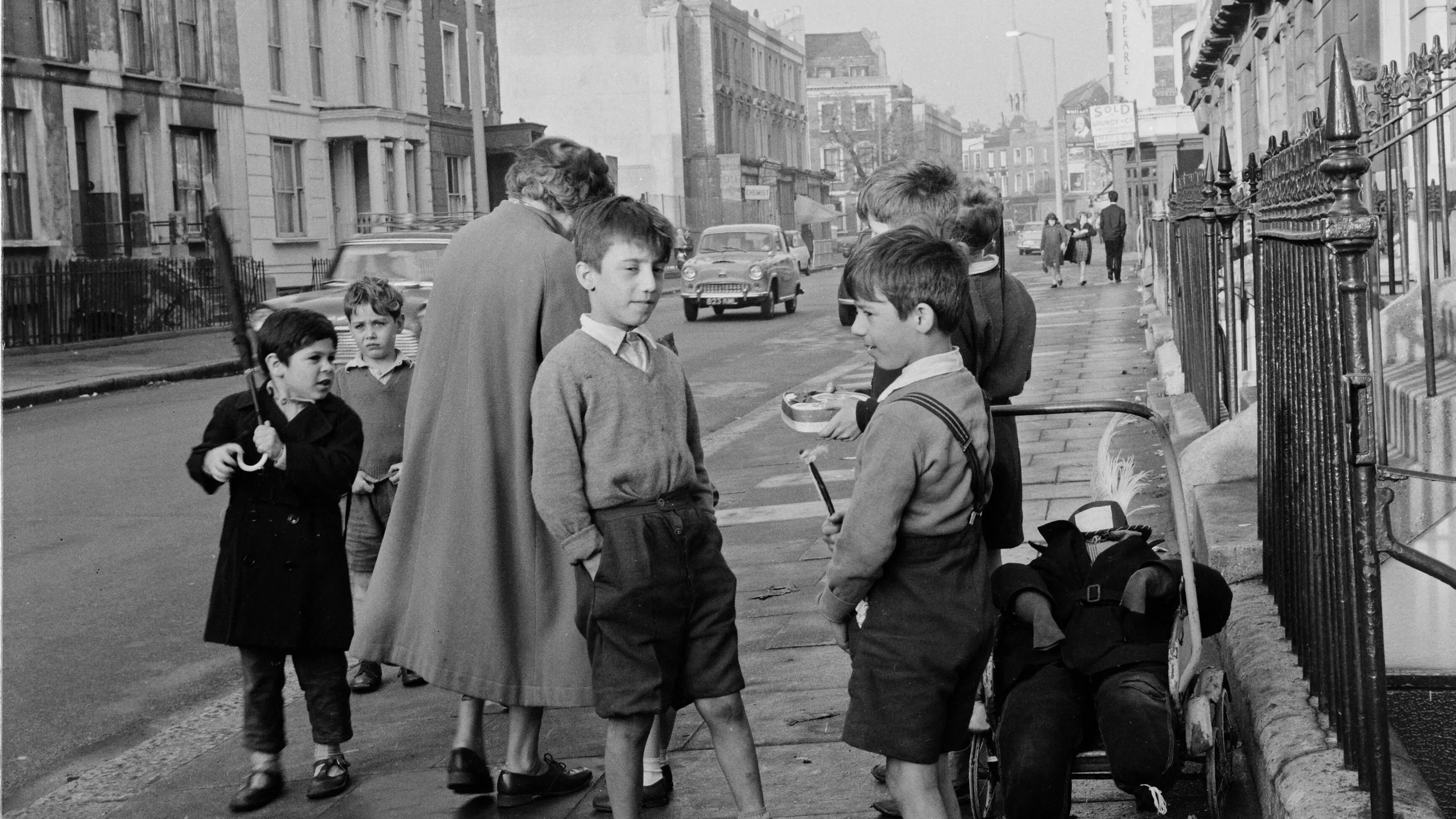
A lost tradition
The penny for the Guy tradition had faded out by the end of the 20th century. Nowadays, it’s Halloween trick-or-treating that sees children take to the streets, asking for sweets, not cash. Around England, some Bonfire Night events still burn effigies – but it’s more likely to be an unpopular figure of the day.


